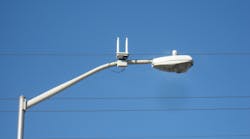Wireless infrastructure is growing more complex, with small cells and other technologies starting to form patchwork quilts of coverage with traditional cellular base stations. In cities, Wi-Fi small cells and distributed antenna systems (DAS) help to connect office buildings, subways, and other public spaces. In rural areas, cellular base stations are more prevalent, covering a wide area without encountering the same interference as in cities.
The problem of keeping people connected as they switch between these access technologies has contributed to the growth of networks that incorporate small cells, picocells, and large cellular base stations. But as they have become more widespread, these heterogeneous networks (HetNets) have proven difficult to test quickly and accurately.
A recent study from Frost & Sullivan, a test equipment research firm, finds that most engineers are using multiple instruments to test handoffs between access points. In an attempt to reduce testing times, wireless carriers have begun to invest in more sophisticated and integrated options for testing quality of service. The report says that the market for HetNet test equipment is expected to reach $2.56 billion by 2022, up from $1.50 billion in 2014.
The patchwork nature of HetNets can make for serious vulnerabilities. As people travel between different access technologies, they might experience dropped calls, lagging video and data applications, and even lost connections as a result of unsuccessful handoffs to small cells. Specifically, the report notes that HetNets still suffer from glitches when handing off between cellular and small cell Wi-Fi networks. It also recommends that user authentication, roaming, and traffic prioritization be improved.
Olga Yashkova, a Frost & Sullivan program manager, says that test vendors are working more closely with equipment manufacturers, service companies, and individual enterprises to stay on top of the industry’s test requirements. And Vivek Reghu, a senior research analyst with the firm, adds that more integrated HetNet test equipment—which can support a wide range of measurements—is growing in demand.
In particular, Reghu notes that engineers are favoring instruments that combine intelligence and hotspot maps “to present field engineers with real-time data for interference source identification.” Live performance reports will speed the testing process, he adds, allowing engineers “to obtain a snapshot of the data that the will help adjust an antenna tilt, for example.”
In the United States, nationwide carriers are expected to sharply increase their small cell installations over the next few years. Fran Shammo, the chief financial officer at Verizon, said in a conference call to investors early last year that his company planned to invest nearly $500 million in small cells, while analysts predict that Verizon will add tens of thousands of small cells this year. AT&T, Sprint, and T-Mobile are expected to follow suit, though not as aggressively.
These changes will clearly have an impact on the test equipment market in the United States, the largest region for small cells installations. The Small Cell Forum, an industry organization promoting the technology, reported last year that North America added around 1.01 million small cells in 2014. However, it is unclear how the upcoming Federal Communications Commission (FCC) spectrum auction in March could change the small cell strategies of nationwide carriers.
The Frost & Sullivan study says that the largest market over the next few years will be in China and other parts of Asia, which are in the process of installing more LTE and LTE-Advanced technology.
